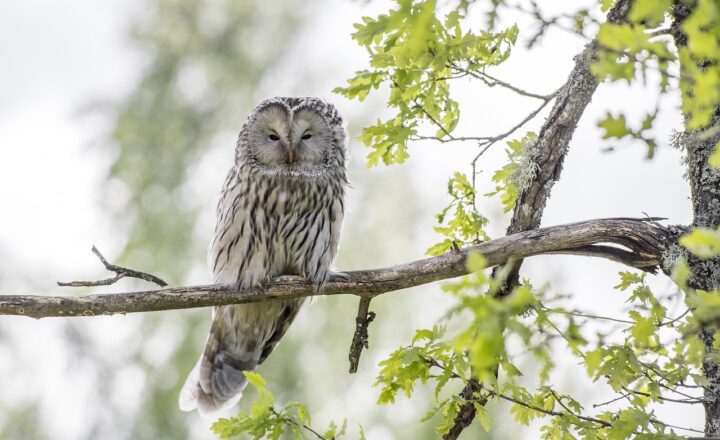The Fascinating World of Cryptozoology: Myths, Legends, and Truths
November 19, 2024

Cryptozoology, often dismissed as mere pseudoscience, delves into the intriguing realm of creatures whose existence has yet to be proven by conventional zoological standards. From the elusive Loch Ness Monster to the enigmatic Bigfoot, cryptids have captured the imaginations of countless enthusiasts, scientists, and curious onlookers alike. This article aims to explore the multifaceted world of cryptozoology, examining its myths, legends, and the underlying truths that propel its continuing fascination.
—
### 1. What is Cryptozoology?
Cryptozoology is the study of and search for animals whose existence is not substantiated by mainstream science. The term itself derives from the Greek words “kryptos,” meaning hidden, and “zoology,” the science of animals. Cryptozoologists operate on the fringes of zoological study, focusing on legendary creatures, folklore, and anecdotal evidence from eyewitness accounts, tracking down beings that some consider to be myths.
While traditional zoology relies heavily on empirical evidence, cryptozoologists highlight the importance of cultural folklore and oral histories, arguing that these narratives may provide insights into creatures that may have existed or still exist beyond the reach of conventional scientific methods.
—
### 2. The History of Cryptozoology
Cryptozoology can be traced back centuries, with tales of mysterious beasts embedded in ancient cultures worldwide. From the **Mokele-Mbembe** of the Congo River to the **Chupacabra** of Latin America, cryptids reflect not only individual societies’ fears and wonders but also the limits of early natural history.
The formalization of cryptozoology as a field emerged in the 20th century, particularly with the publication of Bernard Heuvelmans’ book **“On the Track of Unknown Animals”** in 1955. Heuvelmans is often regarded as the “father of cryptozoology,” arguing for a scientific approach to the search for undiscovered species. His work reignited public intrigue in beasts typically relegated to the domain of myths and urban legends.
—
### 3. Famous Cryptids and Their Stories
Numerous cryptids have enthralled people over the decades. Below, we outline some of the most famous examples:
#### 3.1. **Bigfoot**
Bigfoot, or Sasquatch, is perhaps the most iconic cryptid in American folklore. Alleged sightings date back to the 1800s, with descriptions of a large, hairy humanoid creature ranging from 6 to 10 feet tall. Despite numerous photographs and footprints claiming to capture his existence, no definitive evidence has proven Bigfoot’s existence conclusively.
#### 3.2. **Loch Ness Monster**
Nestled in the depths of Scotland’s Loch Ness, the legendary Loch Ness Monster, or Nessie, has become synonymous with cryptozoology. First reported in the 1930s, sightings suggest a large, prehistoric-like creature residing in the loch. While many photos have circulated, most have been debunked as hoaxes or misidentified animals, yet the quest for Nessie continues to attract tourists and researchers.
#### 3.3. **Chupacabra**
Emerging in Puerto Rico in the 1990s, the **Chupacabra** is a creature said to drink the blood of livestock, particularly goats. Descriptions of the Chupacabra vary from a reptilian creature to a hairless dog-like being. Its name means “goat-sucker” in Spanish, and the creature has since become a popular figure in folklore across the Americas.
—
### 4. The Scientific Perspective on Cryptozoology
While many view cryptozoology as a pseudoscience, some scientists argue that certain cryptid studies may lead to legitimate discoveries. The history of science is filled with instances where creatures once deemed mythical were later proven to exist. For example, the **Okapi**, a cousin of the giraffe, was presumed to be a cryptid until scientifically confirmed in the early 20th century.
Moreover, ongoing discoveries in genetics, particularly environmental DNA (eDNA) research, are reshaping how biodiversity is understood and enabling the search for elusive species, even in previously inaccessible or unexplored areas. Cryptozoologists argue that exploring these scientific avenues could shed new light on old legends.
—
### 5. Cryptids and Conservation Efforts
Interestingly, the study of cryptids can coincide with conservation efforts. The allure of potentially discovering new species raises awareness for biodiversity and environmental preservation. Cryptozoology can inspire a broader interest in habitats under threat and generate enthusiasm for wildlife conservation through its storytelling.
—
### 6. The Psychological Appeal of Cryptids
The fascination with cryptids often taps into psychological and cultural elements such as:
– **Fear of the Unknown:** These creatures represent humanity’s intrinsic fear of what lurks beyond familiar territory.
– **Adventure and Exploration:** Cryptids invoke a sense of adventure, drawing individuals to remote locations in search of the legendary.
– **Cultural Identity:** Many cryptids are deeply woven into local cultures and histories, reflecting local fears, values, and traditions.
—
### 7. Conclusion: Myths, Legends, and Truths
While the existence of cryptids remains unproven, the allure of the unknown continues to inspire curiosity and debate. Cryptozoology may straddle the line between myth and reality, but the narratives surrounding these creatures contribute to our understanding of cultural legends, human psychology, and the ongoing exploration of our natural world.
Whether the Loch Ness Monster lurks in the loch or Bigfoot roams the Pacific Northwest, the fascinating world of cryptozoology invites us to look beyond what we know and consider the unknown with wonder and skepticism alike.
In an age of rapid technological advancement, the exploration of cryptids represents humanity’s unrelenting desire to uncover hidden truths, sparking a continuous quest for knowledge in this ever-mysterious world we inhabit.








